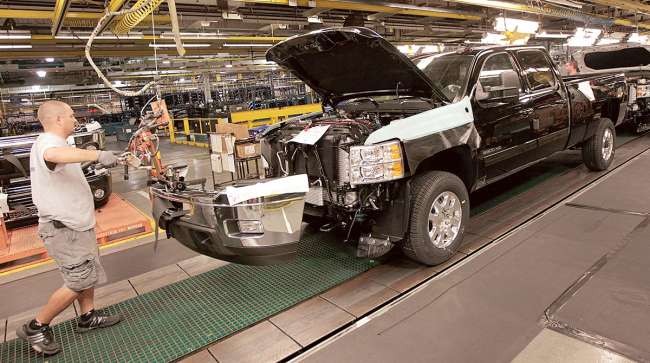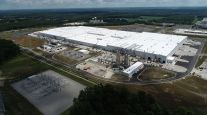GM Profit Surges on Sales of Higher-Margin Pickups

[Stay on top of transportation news: Get TTNews in your inbox.]
DETROIT — General Motors’ first-quarter net income surged to $2.98 billion as strong U.S. consumer demand and higher prices offset production cuts brought on by a global shortage of computer chips.
Despite the semiconductor shortage, GM stuck with full-year pretax earnings guidance of $10 billion to $11 billion issued earlier in the year and said earnings would be at the high end of the range. Full-year net income is expected to be $6.8 billion to $7.6 billion. The company predicts a strong first half with a pretax profit of around $5.5 billion.
CEO Mary Barra wouldn’t say how much production she expects to lose to the chip shortage. But she said purchasing, manufacturing, engineering and sales teams are working to divert the chips from cars and smaller SUVs to full-size pickup trucks, big SUVs and new electric vehicles.
“A lot of really good work is being done across our company to source semiconductors, allocate them across them our most in-demand and (factory) capacity-constrained products,” she said.

Barra
GM reiterated that the shortage would cost it $1.5 billion to $2 billion in earnings before taxes this year due to lost production. The company has been forced to cut production of some smaller vehicles with lower profit margins, such as the Chevrolet Equinox SUV.
“Is there an impact this year? Absolutely,” Barra said on a conference call with reporters. “But the team keeps working to minimize it.”
The first-quarter profit increase was 12 times larger than the same period last year, when the start of the coronavirus pandemic forced automakers to shutter factories, limiting GM’s net income to $247 million.

The year is 2039. Zero-emission, electric heavy-duty trucks roll past you on the highway. Charging ports are now commonplace at terminals and truck stops. Diesel-powered vehicles are becoming a thing of the past. You sit and wonder: How did we get here? Here, in 2021, Daimler Trucks North America's head of eMobility speaks to RoadSigns. Hear a snippet above, and get the full program by going to RoadSigns.TTNews.com.
Shares of GM rose 3.5% to $57.25 in premarket trading May 5.
Excluding non-recurring items, GM made $2.25 per share from January through March, doubling Wall Street estimates of $1.05. Revenue of $32.47 billion was below estimates of $33 billion according to FactSet.
The Detroit automaker reported pretax income for the first quarter at $4.4 billion.
During the quarter, the company said it was able to divert precious computer chips to higher-profit models such as full-size pickup trucks and SUVs, and that brought the higher income.
In the U.S., GM’s most profitable market, sales rose 4% from January through March compared with a year ago. But even with the gain, first-quarter sales of 639,406 vehicles was the second-lowest the first quarter since 2015, and the figures were 4% below the same period in 2019, according to Cox automotive.
Still, demand was strong and inventories were low, allowing GM to reduce discounts and raise prices. GM’s average sales price hit a record of $44,685, up 9% from a year ago, according to Cox figures.
Last week crosstown rival Ford Motor Co. said the worsening chip shortage would cut its production in half during the current quarter. The situation will improve in the second half, but Ford still will see production fall 10% over original plans. That means Ford won’t be able to make up for any lost production this year.
The company expects to lose factory output of 1.1 million vehicles for the year, up from an earlier estimate of 200,000 to 400,000. That will mean fewer vehicles to sell, but thus far it has brought higher prices because demand is strong.
Nearly all automakers are struggling with the chip shortage, caused by semiconductor makers switching their factories to more profitable consumer-electronics processors when auto plants closed due to the coronavirus last year. The auto factories came back faster than expected, but the chip makers didn’t quickly switch their factories back to automotive-grade chips. Then a March fire wiped out much of the chip production at a factory in Japan that makes chips for vehicles.
Want more news? Listen to today's daily briefing below or go here for more info:




